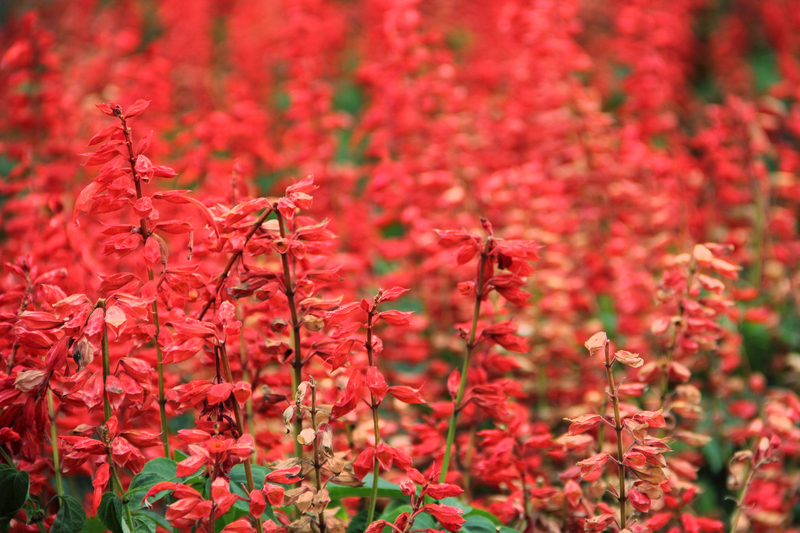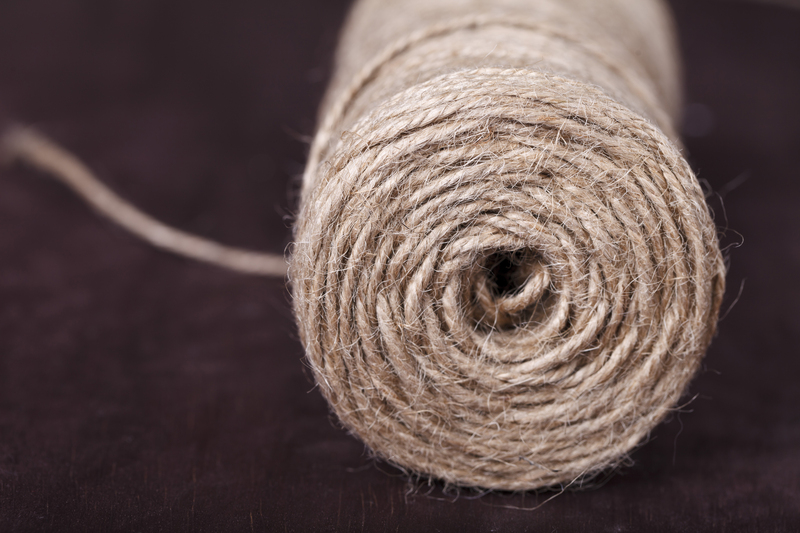Stay on Top of Weeds: 3 Tips Every Gardener Should Know
Posted on 04/07/2025
Weeds have a notorious reputation for invading gardens, competing with beloved plants for light, water, and nutrients. Whether you have a lush vegetable plot or a modest flower bed, learning how to control weeds is crucial for the health and beauty of your garden. In this comprehensive guide, we'll uncover three essential tips for staying on top of weeds. Mastering these weed management strategies will help you enjoy a thriving and well-maintained garden season after season.
Understanding the Enemy: Why Weed Control Matters
Weeds aren't just unsightly; they can cause significant harm to your plants. These pesky plants sprout quickly, spread rapidly, and often prove more resilient than your prized flowers or vegetables. Staying ahead of weeds involves more than simply pulling them out. It requires a thoughtful approach grounded in timing, technique, and prevention.
The Impact of Weeds on Your Garden
- Nutrient Competition: Weeds extract vital nutrients from the soil, leaving less for your cultivated plants.
- Water Shortage: These intruders soak up available moisture, starving your garden in dry spells.
- Pest and Disease Havens: Some weeds can harbor pests and diseases, increasing risks in your garden.
- Reduced Aesthetics: Even a few weeds can make a well-maintained garden look neglected.
Now that you know why it's crucial to keep weeds under control, let's dive into the best weed prevention and management strategies.

Tip 1: Master Mulching for Weed Suppression
Mulching is one of the most effective tools for weed control. By creating a protective barrier, mulch prevents weed seeds from accessing the light they need to germinate and thrive. Strategic use of mulch not only helps to suppress weed growth but also improves soil health and moisture retention.
Types of Mulch to Consider
- Organic Mulch: Such as bark chips, straw, leaves, or compost. Over time, it decomposes and enriches the soil.
- Inorganic Mulch: Includes gravel, landscape fabric, or black plastic. These last longer but don't add nutrients to the soil.
How to Use Mulch for Maximum Effect
- Apply a Layer 2-4 Inches Thick: Too thin, and weeds may push through. Too thick, and you risk suffocating desirable plants.
- Keep Mulch Away from Plant Stems: Prevent rot and pest troubles by allowing a small gap around the stems.
- Replenish Regularly: Organic mulch breaks down over time, so refresh it each season for continued weed protection.
Using mulch is a proactive approach to minimizing weed breakouts. By staying on top of weeds with regular mulching, you dramatically reduce the time spent tediously pulling weeds by hand.
Tip 2: Weed Early and Often for Lasting Control
The most important rule in weed management is to act swiftly. Weeds are easiest to remove when they are young and their roots have not yet taken hold. Adopting a routine that includes frequent weeding sessions is the secret to maintaining a weed-free garden.
The Best Time to Weed
- Right After Rain: Moist soil makes it easier to pull weeds, roots and all.
- Before Weeds Go to Seed: Prevent them from multiplying by catching them early.
- During Routine Inspections: Make weed checks part of your gardening habits for continuous prevention.
Tools and Techniques for Efficient Weeding
- Hand Pulling: Great for small, shallow-rooted weeds. Grab by the base and pull gently to avoid breaking the root.
- Hoeing: Use a sharp hoe for larger areas. Cut weeds just below the surface for best results.
- Weeding Forks or Knives: Effective for deep-rooted weeds or tight spots around plants.
Consistent weeding is about more than garden aesthetics--it minimizes weed seed production and limits their spread. To effectively stay on top of garden weeds, treat weeding as a regular, manageable task rather than a seasonal chore.
Tip 3: Use Smart Planting Strategies to Crowd Out Weeds
Did you know that your planting arrangement can actually suppress weeds naturally? Dense planting and smart garden design limit the open spaces where weeds thrive. With less bare soil exposed to sunlight, weed seeds struggle to germinate and grow.
Companion Planting and Ground Covers
- Close Spacing: When appropriate, plant vegetables or flowers tightly enough to create dense foliage as they grow.
- Living Mulches: Use low-growing ground covers like clover or creeping thyme to create a natural weed barrier.
- Cover Crops: In off-seasons, sow cover crops (such as rye or vetch) to prevent weed colonization and add nutrients.
Landscape Design for Fewer Weeds
- Minimize Bare Soil: Use pathways, hardscaping, or mulched beds to reduce exposed earth.
- Opt for Perennial Borders: Perennial plants come back each year, providing ongoing weed suppression with minimal effort.
- Edge and Maintain Borders: Defined garden edges are easier to weed and mulch, keeping weed incursions at bay.
By implementing good planting practices, you can create an environment where weeds simply can't take hold. Controlling weeds becomes easier, and you get the added benefit of a fuller, more attractive garden.
Additional Proactive Weed Management Tips
- Don't Let Weeds Flower: Even if you can't remove all weeds right away, clip off any flowers or seed heads immediately.
- Inspect New Plants and Compost: Check nursery transplants and homemade compost for weed seeds before adding to your garden.
- Water Carefully: Use drip irrigation or soaker hoses to target your plants--this deprives weeds of water and encourages desirable root growth.
- Practice Crop Rotation: Changing the location of vegetable plants each year can help break the cycle of persistent weeds associated with certain crops.
Recognize Common Garden Weeds
Knowing which types of weeds frequently invade your garden aids in quicker identification and smarter control. Here are some of the most prevalent offenders:
- Dandelion (Taraxacum officinale): Deep taproots make these tricky to remove without digging.
- Crabgrass (Digitaria spp.): Spreads rapidly in lawns and bare spots; control early for best results.
- Bindweed (Convolvulus arvensis): A persistent vining weed with white or pink flowers; spreads by root and seed.
- Purslane (Portulaca oleracea): Low-growing, succulent-like weed; extremely prolific seed producer.
- Chickweed (Stellaria media): Thrives in cool, moist gardens and produces abundant seeds.
Quick identification allows you to choose the most effective removal and prevention strategy for each weed type, supporting your ongoing efforts to stay weed-free.

Consider Sustainable Approaches to Weed Management
Eco-friendly weed controls are better for you, your garden, and the environment. Avoid chemical herbicides whenever possible. Here are some natural solutions:
- Boiling Water: Pour carefully onto weeds in hardscaped areas (avoid desired plants).
- Vinegar Sprays: Homemade solutions can burn weed foliage, especially on hot, sunny days--but use with caution, as vinegar can also harm desired plants.
- Corn Gluten Meal: An organic pre-emergent that can inhibit weed seed germination.
Combining these methods with the essential tips in this article results in safer, more resilient gardens with strong weed control all season long.
Stay on Top of Weeds: The Takeaway for Every Gardener
Effectively managing weeds is a year-round challenge but can be simplified with the right approach. To stay on top of weeds in your garden, remember these key takeaways:
- Mulch Strategically: Block light, suppress growth, and improve your soil.
- Weed Regularly: Early intervention means easier removal and far fewer weed problems later.
- Plant Smart: Use dense planting and ground covers to choke out possible invaders naturally.
Don't let weeds take over your outdoor sanctuary. With consistent effort and these proven strategies, your garden will not only be healthier and more productive--it will also become a place of beauty and pride. Stay vigilant, act early, and choose sustainable weed control for the best results season after season.
If you found these tips for weed management helpful, share them with fellow gardeners. Together, let's cultivate gardens that are not only weed-free but also flourishing with life!

